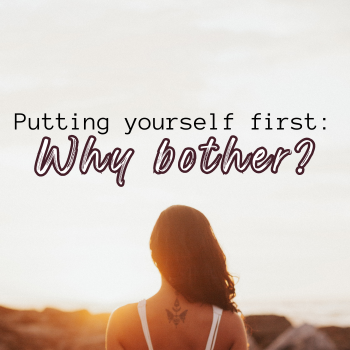
May 3, 2024 | My Blog
In the midst of juggling clients, business, and family, where do YOU fit in?
It’s a question we often overlook as we get swept up in the whirlwind of daily life.
But it’s time to pause and ask: when was the last time you took a moment for yourself?
Think about it. How often do we put ourselves last, sacrificing our own well-being for the sake of work or others? I’ve seen it time and again—people pouring all their energy into their jobs, only to come home exhausted and irritable, snapping at their loved ones without realizing it.
It’s a tough spot to be in, isn’t it? Feeling like you’re constantly running on empty, trying to meet everyone else’s expectations while neglecting your own needs. And yet, so many of us find ourselves trapped in this cycle, unable to break free.
I know you don’t want to hear it but really it doesn’t have to be this way. You have the power to change your circumstances, to prioritize your own mental, emotional, and physical health.
I’ve been there myself, caught up in the hustle and bustle of work, until one day my husband told me he didn’t recognize the person I’d become. It was a wake-up call—a reminder that I needed to take a step back and re-evaluate my priorities.
I know I’m not alone. I’ve heard countless stories from others who have experienced similar struggles—people who have pushed themselves to the brink, only to realize too late the toll it was taking on their well-being and even their health.
But the good news is, it’s never too late to make a change. It starts with taking that first step—whether it’s reaching out for help, setting boundaries, or simply giving yourself permission to take a break.
How, you might ask? Here are some things to think about to help you get started.
-
- Set Boundaries: Be honest with yourself about your limits and priorities. Decide what you are willing to accept and what you’re not. Oh and by the way, it’s okay to say no.
- Schedule “Me Time”: Block out time in your calendar for self-care activities, treating this time as non-negotiable. You wouldn’t not show up for a meeting, so don’t chicken out on time for yourself either! Whether it’s going for a walk, reading a book, or practicing mindfulness, prioritize these moments for yourself.
- Reach Out for Support: Ask for help when you need it, no matter how hard it is or what story you’re telling yourself. I’ve heard stories like: “I don’t want to bother that person; It’s too late today; they won’t have time. Don’t let any of these stories convince you to not reach out. Whether it’s talking to a friend, family member, or professional therapist, having someone to lean on can make a significant difference.
- Practice Mindfulness: Take a few moments each day to check in with yourself and tune into your thoughts and feelings. Mindfulness practices like deep breathing, meditation, or journaling can help reduce stress and increase self-awareness.
- Prioritise Sleep and Nutrition: Ensure you’re getting enough rest and nourishing your body with healthy foods. Many situations feel a lot different when you’ve had good rest or have eaten a meal. Hangry is a real thing! A well-rested mind and body are better equipped to handle stress and make good decisions.
So, if you’re feeling overwhelmed and exhausted, know that you’re not alone. And know that there is hope. With a little compassion and self-care, you can reclaim control over your life and prioritize your own well-being.
Prioritising yourself, giving yourself space to breathe, and allowing yourself time to level up, isn’t something that you have to remember to add to your to-do list. It’s a critical component of your happiness and living a fulfilling life.
Ready to take the next step but don’t know where to from here? Book a free discovery session here and let’s work together to find what works best for you.
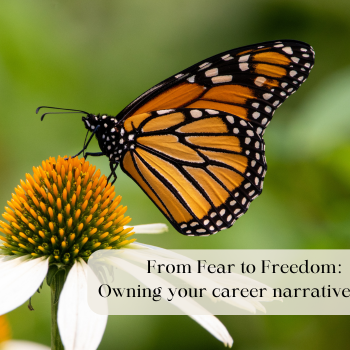
Mar 27, 2024 | My Blog
“My fear of failure along with my fear of missing out keeps my mouth shut and makes me wait and see what happens.” – coaching client
In recent coaching sessions and conversations, a common theme emerges – the struggle against challenges, fuelled by fear and complacency. Many of us find ourselves in situations where we let things slide, whether out of necessity, a desire to help, or a fear of disrupting the status quo.
But what happens when we don’t stand up for ourselves?
Impact and Consequences:
The consequences of staying silent can be profound. Throughout my career, I’ve experienced first-hand the ramifications of remaining silent. There were many occasions where I found myself overwhelmed and undervalued in the workplace. I hesitated to speak up, fearing that I would be perceived as incompetent or disruptive. However, as the pressure mounted and I found myself trapped in a state of mediocre acceptance of my circumstances, I realised that my silence, along with that of my colleagues, only perpetuated the situation. It wasn’t until I gathered the courage to voice my concerns that I began to reclaim control over my life and career. Learning to recognise the signs of impending disaster earlier in the process has been an important skill learnt.
Recognising the Need for Change:
Recognising when change is necessary is crucial. Sometimes, it takes courage to voice our thoughts and opinions, especially in professional settings.
But the alternative – remaining silent – can lead to feelings of guilt, disappointment, and frustration. After a meeting a few years ago, a colleague approached me, thanking me for voicing what others were thinking but couldn’t find it in themselves to say. She would never know that my hands were sweating, my heart pounding and I thought 10 times about what I wanted to say.
Actionable Steps:
So, when do we gather our courage and say, “Enough”?
Here are some actionable steps we can take:
- Self-reflection: Take a moment to reflect on our current situation. Why is it a problem? What needs to change?
- Setting Boundaries: Be honest with ourselves about our boundaries and priorities. What are we willing to accept, and what are we not.
- Communication: Have open, honest conversations with ourselves and our employers. Voice our concerns and negotiate for change. Being proactive and voicing our concerns has often led to positive changes in my work environment and situation.
- Seeking Support: Don’t be afraid to seek support from friends, family, or professional mentors. Sometimes, a fresh perspective can make all the difference. Discussing my concerns with a mentor or coach has helped me gain clarity and confidence in addressing workplace challenges or seeing the bigger picture.
- Taking Action: Remember, we have the power to drive our own car. Take proactive steps to reclaim control over our life and our career. Advocating for the team and myself by taking on new challenges and seeking opportunities for growth has been instrumental in my journey.
If we’re feeling that we are just along for the ride, it’s time to renegotiate our circumstances and reclaim control over our lives.
This doesn’t mean blowing things up; it means taking proactive steps to advocate for ourselves and our well-being.
We owe it to ourselves to stand up for what we want and what we deserve.
Like Pieter de Villiers from Shadowmatch says:
Stop chewing bubble gum. Get off the couch. And do it.
Let’s explore how you can overcome challenges, find your voice, and thrive in your professional life. Schedule a free Discovery session with me here
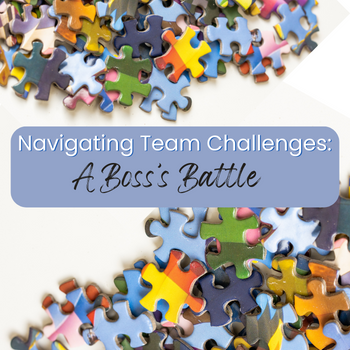
Feb 9, 2024 | My Blog
“My energy is not enough. I’m under pressure and can’t depend on my team. I get frustrated when I have to explain things over and over again to my team.”
In recent heart-to-heart conversations with bosses, a common thread emerges – a sense of overwhelm, frustration, and the solitary struggle against challenges. Simultaneously, their teams appear hesitant, lacking innovation, tethered by fear, succumbing to complacency, or adrift in ambiguity about expectations. I’ve seen teams wait for the boss to make suggestions even though they’ve got plenty of experience and ideas but they are, for whatever reason, reluctant to put themselves out there.
This misalignment creates a rift, disrupting the vital trust needed for a harmonious workplace. It’s a universal challenge; everyone, regardless of their role, grapples with challenges, expectations, and the quest for genuine happiness.
To untangle this complex weave, when working with a team, I initiate intimate one-on-one sessions. It’s a plunge into the intricate tapestry of emotions, histories, cultural-, professional-, and personal habits, and experiences that often hinder genuine understanding. In the ebb and flow of everyday busyness and emotions, meaningful dialogues are often scarce. These conversations allow us to reach into the individual and very often come back with really great ideas that they just need a bit of courage and support to put into action
Beneath the surface, the real problems are often modest issues that have stacked up over time, transforming into formidable barriers. This cycle, a vortex of challenges and frustrations, persists amidst the daily crises, creating discord in the workplace.
A Weighted Concern:
One pressing concern echoes in the minds of many bosses – the fear of wasted time and effort. Entrusting a task to the team, only to find it incomplete or not meeting the desired standard, can be disheartening. It triggers the sentiment of, “I might as well have done the job myself, doing it right the first time.”
One of the simplest places to start understanding where this systemic failure has it all going wrong is to investigate your company’s Standard Operating Procedures (SOPs). Are they in place? Implemented effectively? Do they provide the clarity your team needs? SOPs are part of a solution that helps manage expectations, give understanding and guidance, and ultimately build confidence in your team, allowing you to trust that they know what they need to do and how they need to do it.
Breaking the Cycle:
-
- Bosses need introspection. Do you have the support, skills, and habits needed to deal with the pressure you are feeling?
- Take a good, hard look at your expectations. Are they realistic and communicated effectively? How can you encourage your team to actively contribute their insights and ideas, fostering a culture of collaboration and innovation?
- Does the team possess the necessary skills and experience to meet these expectations? What proactive steps can be taken to enhance their skills and empower them to excel?
- Is the space you are holding for your team conducive to them asking for help and guidance without judgment or retribution? How can you create an environment that not only supports but also encourages individual and collective growth?
- Are SOPs fit for purpose, and is someone actively seeking more efficient alternatives? Recognise that well-implemented SOPs are a cornerstone in avoiding the fear of wasted time and effort, providing the clarity your team needs.
The key lies in breaking free from the loop. It involves boss self-care, recalibrating expectations, empowering and upskilling the team, and ensuring the basics are in place like efficient SOPs. Clear communication and effective implementation are pivotal.
A Starting Point, Not the Destination:
Recognise that there’s no one-size-fits-all remedy. Consider this as a guide—a launching pad on the path to a more harmonious and productive work environment. Each workplace is distinctive, confronting diverse challenges. Personalised strategies and continuous efforts are essential, tailored to the unique dynamics of each workplace.
Most importantly, realise it’s an ongoing process, much like washing dishes. Just when you’ve got everything nice and clean, it’s time for the next meal, and you have to start all over again.
Ready to revolutionise your workplace dynamics? Gain invaluable insights and expert guidance to propel your team towards success. Let’s embark on this transformative journey together—towards a more harmonious and productive work environment. Schedule your free Discovery session today for personalised strategies tailored to your unique challenges.
Book a free Discovery session here.
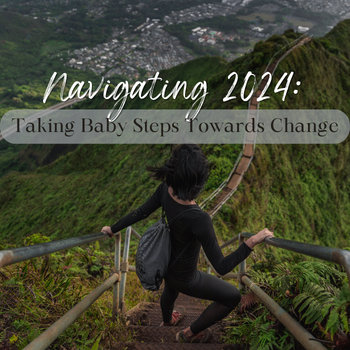
Jan 6, 2024 | My Blog
I’ve heard so many people saying that 2023 was a rough year and they couldn’t wait for it to be over.
The trouble with that is how we perceive it. We find ourselves in situations, but how we react in those situations and the stress we feel is what we take into the new year with us. It’s like having something smelling on your hands and it contaminating everything that you touch. Unless you get rid of the stuff on your hands, everything will keep smelling.
Similarly, unless you change the way you think and do things, you’ll remain stuck in the loop.
Enter resolutions! The tough love plans we make to get us out of the rut we’ve somehow gotten ourselves into.
We say to ourselves we’re going to the gym more often. We start by getting a membership and maybe get ourselves to the gym once or twice, but soon life starts getting in the way, and the next thing you know, it’s October, and you are frustrated with yourself because you’re exhausted, your body is failing, and your mind is overwhelmed.
Absolutely, think of a resolution; it’s your goal, after all. But don’t get stuck on the bigger picture. Break it down and ask yourself:
“What are the smallest possible steps I need to take?”
These steps need to be simple, easy, and easy to repeat.
You don’t decide to run a marathon and then the next day attempt that marathon.
You plan, you prepare, and you practice.
You start by running 1 kilometer, then 2, then 3, and you keep repeating until you’re ready. AND THEN you run the marathon.
What do you do if you find yourself not even able to start running?
You take a smaller step.
During our training, our instructor told a story of finding a woman walking with a stone in her hand. He asked her what she was doing. She told him she wanted to run a marathon but struggled to motivate herself. So, she got a stone and every day she would start from a specific point and walk 100 steps and put the stone down. She would then walk the 100 steps back. The next day she would walk the same 100 steps, pick up the stone she left, and walk another 100 steps more. She would leave the stone there and walk back to the beginning. Every day she would repeat this, and very soon she was running. A few months later she was indeed running the marathon.
Simple, easy, easy to repeat.
The value is in doing the small steps every day and checking in with yourself while you are repeating. By focusing on the smaller steps and working through what is happening with you while you are in the middle of these steps, you are able to see what is working and what is not, and you can make the adjustments and tweaks needed to ensure your success.
So, take those 2024 resolutions and set yourself up for success by taking a realistic bite, something that has you saying:
“That’s easy, I can do it” – Then DO IT and repeat.
If you need some help discovering what your next steps are, book a free Discovery session with me here https://calendly.com/marildawiegand/discovery-session
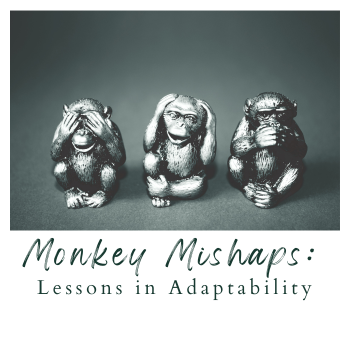
Oct 27, 2023 | My Blog
Living in Greater Kruger Park means we’re in a constant battle with those cheeky monkeys trying to sneak into the house. My husband’s love for wide-open windows doesn’t make it any easier.
Sometimes, despite our best efforts to tuck everything out of their reach, we mess up. A forgotten jar on the counter or letting the dishes pile up can lead to unexpected monkey encounters.
Lately, these crafty monkeys found a way in through a tricky window, no matter how hard I tried to secure the place. This usually ends with a mess of spoiled food and, well, some smelly and unpleasant surprises – not the ideal start to the day.
Last night, I tried to outsmart them by securing the scullery and windows, leaving only the stoep windows open. It was a scorching day, and I hoped for a cool breeze during the night.
But imagine my surprise when I heard a commotion in the kitchen just before sunrise. Rushing to the scene, I found peanut butter all over the floor, broken glass, and the lounge door ajar. It seems I didn’t secure the inner doors well, as of course monkeys can’t open doors.
Truth be told I had realized we were in for a fight. Monkeys, once they’ve had success, keep coming back.
So, this morning, I spent most of my time stashing away tempting morsels and then opened all the windows. My plan? If they don’t see any food, they might lose interest and move on.
Of course, that wouldn’t stop them from leaving some surprises, but I decided it’s better to clean up after them than feel trapped and endlessly frustrated while trying to chase them out.
This whole experience feels like a life lesson to me. No matter how well we plan and prepare, things can still go haywire, and the unexpected can throw us off course. None of us are perfect, and we all forget something as simple as closing a door sometimes.
This morning, three different monkeys visited my kitchen. They didn’t take anything, and, surprisingly, they left no bad odours behind.
Right now, this lesson feels quite fitting in my life.
So,
-
go ahead, prepare as best you can.
-
Then, open up to life, embrace new opportunities, and
-
be ready to handle any hiccups that come your way.
After all, it’s better to deal with metaphorical “poop” than feel stuck. And who knows, maybe you won’t have to deal with it at all.
Finding yourself in a real-life monkey business situation and need some help where to start the cleanup? Book a discovery session with me today https://calendly.com/marildawiegand/discovery-session

Oct 7, 2023 | My Blog
For a while now, I’ve been listening to my clients as they share their struggles with procrastination.
It’s a common thing, right?
I’ve often wondered if there’s more to it than meets the eye and maybe we shouldn’t be too quick to label it as a villain.
Here’s a fancy word for you: “pejoration.” It’s when a word starts off all nice and neutral but eventually turns into a bad guy. “Procrastination” seems to have gone down that road.
When someone says, “I need to stop procrastinating,” it’s typically with a sense of frustration, implying that delaying work is a big problem
But what if, just maybe, procrastination isn’t always the enemy? What if it’s our mind’s way of dropping hints? Like, “Hey, slow down, something’s up.” It could be saying we need more time to think or your sub-conscious is realising something that isn’t quite as apparent or that the task might be more expensive than we think.
Most of us know, and have experienced, that when life gets tough, we’ve got three natural responses—fight, flight, and freeze.
- Fight: That’s when you’re all like, “Bring it on, I’ll face this head-on.”
- Flight: When trouble’s brewing, you want out… fast.
- Freeze: You’re stuck, like a deer in headlights, not sure which way to turn.
These are just our natural reactions to life’s curveballs.
I’ve come to view procrastination as a form of the “freeze” response, although it leans toward the milder end of the spectrum. It’s like a mental pause button, telling us to dig deeper.
Here’s what I’ve gathered from this view:
- Understanding:
-
- Take a Break: Step away from the chaos, clear your head, and figure out what’s really bugging you about the task.
- Planning:
-
- Set Smaller Goals: Chop your tasks into bite-sized bits. It’s less overwhelming.
- Taking Action:
-
- Start Anywhere: Don’t wait for the stars to align; just make a move. Ask yourself, “What’s the smallest step I can take?” and do it.
- Seek Support: Share your goals with someone who can give you that gentle nudge.
- Celebrate Progress: Even if you don’t finish the whole thing, pat yourself on the back for the little wins.
- Practice: Keep at it, you learn best by doing.
- Be Patient: Sometimes, the slow route gets you there just fine.
Instead of seeing procrastination as a villain or a roadblock, let’s treat it as a sign that we’re on a journey of self-discovery and growth. So, go easy on yourself; it’s all part of the ride.
It’s okay to take a breather; just don’t let it keep you stuck.
Procrastination doesn’t have to be the bad guy; it can be a stepping stone toward something amazing you didn’t think about before.
If you want some personalised help with your procrastination battles, why not book a free Discovery session here: https://calendly.com/marildawiegand/discovery-session







Recent Comments